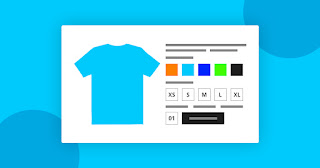Things To Consider Before Selling on Amazon
Amazon is the one-stop solution for expanding one's business, whether it's a big brand like Apple or a small home-based seller. Because the goods featured on Amazon are available to the public 24/7, millions of buyers visit the website every day.
If you intend to sell your products on Amazon, there are a few things to consider that will help you increase your sales. Because the platform is so large, it can be intimidating at first. Continue reading the article to learn everything you need to know about selling on Amazon, including the best products to sell, different fulfillment options, and so on.
Before we get into how to sell on Amazon, let's go over the different types of seller accounts.
Types of Amazon Seller Accounts:
The first step in creating an Amazon seller account is to select an appropriate plan. Individual and professional accounts are the two types of seller accounts. The primary distinction between the two is the number of units.
Individual Account:
Choose the Amazon individual seller account if you plan to sell fewer than 40 units per month. Every time an item is sold, the seller must pay $0.99 to Amazon. There are no monthly subscription fees. The disadvantage of this plan is that it does not allow for the creation of sponsored advertisements.
Professional Account:
We recommend the professional plan if you plan to sell more than 40 units per month. It has a monthly fee of $39.99. If you have more items to sell, this method can help you save money. The benefit of having a professional account is that you have a chance of winning the buy box.
After that, you can proceed to create your seller account.
What is Amazon Seller Central?
It is an online marketplace that allows retailers to use Amazon to sell and promote their products directly to customers. To begin selling their products on Amazon, one must first register with Amazon Seller Central. If you do this, you are now a third-party seller.
It means you have the ability to publish product listings, set your own prices, and decide how many items to sell.
Check out this SellerApp's video to know How to Set Up Amazon Seller Central Account in 2022:
Seller Verification Requirements
Before creating a seller account, make sure to have the following information ready.
Business data includes the legally registered business name, contact information, and address.
To complete the registration and verification process, provide your company's email address and phone number.
Credit Card - To avoid registration cancellation, ensure that your credit card is valid and can be charged internationally.
Tax ID - This includes the business tax ID or Social Security Number, as well as the state tax ID
Shipping addresses.
Company Logo
What products are customers looking for?
These are the most popular Amazon categories. On a side note, click here to save yourself the time and effort of conducting manual research for the items to sell.
Books
Electronic items
Clothes, shoes, and accessories
Toys and games
Baby products
Computers
Pet Supplies
Video games and accessories
Art, craft, and office supplies
Home and Kitchen
Consider the following factors when selecting a product to sell:
The chances of something going wrong with these products are extremely low. However, when deciding what to sell, several factors must be considered.
Are people interested in these products?
Check to see if the products you want to sell are in high demand. Knowing what consumers want increases your chances of making more sales.
What are the strengths and weaknesses of your competitors?
Examine your competitor's performance in great detail. Learn why customers buy their products, what they like and dislike, and if you have anything unique to offer.
How much will you profit?
Add up the costs of sourcing, product price, packaging, shipping, and ROI to determine your profit margin. To avoid a loss, make sure your profit is high.
Are there already too many people selling the same product?
It will be difficult to sell your products if many others are doing the same.
Avoid using seasonal products.
Although selling seasonal goods may be appealing, keep in mind that people will only buy them for a limited time. If you want to sell indefinitely, choose products that are always in demand.
What is Amazon FBA?
Amazon provides three types of fulfillment services: Fulfilled by Merchant (FBM), Seller Fulfilled Prime (SFP), and Fulfillment by Amazon (FBA). We'll get to the first two in a minute; in the meantime, consider the third option.
When a merchant chooses Amazon FBA, Amazon handles all aspects of shipping. All you have to do is enroll in the program and ship your products to the fulfillment center.
From this point forward, Amazon will handle all aspects of ensuring that your products reach customers. They handle everything, including product selection, packaging, shipping, delivery, returns, and customer service.
What is Fulfillment By Merchant (FBM)?
FBM is a fulfillment method in which the seller lists his products on Amazon but manages his own inventory and logistics. The merchant's resources are used to package, handle, and ship the goods to customers.
Amazon FBM is a good option if you don't need to sell a large number of units every day or if the products are from your own brand. This method saves money because you don't have to pay for inventory storage or shipping.
What is Seller Fulfilled Prime (SFP)?
If you don't want to pay a high fee for FBA but still want complete control over your products, there is a solution for you. FBA and FBM are combined in Seller Fulfilled Prime.
Verified sellers with a professional account and the Prime badge can offer to ship within 2 days in this section. However, instead of storing their inventory in an Amazon fulfillment center, they can use their own warehouse or that of a third party.
The Benefits and Drawbacks of Selling on Amazon
Pros:
Global Impact:
Selling on Amazon allows you to reach international customers.
Easy to start:
Registration and selling are simple processes that do not require much effort.
Recognition:
Selling on the world's largest e-commerce platform establishes you as dependable and trustworthy.
Flexibility:
You can list your products at any time and from the comfort of your own home.
No need to stock up:
There is no need to stock up: If you choose FBA, you will not have to worry about manually stocking your products because Amazon will do it for you.
Cons:
Risk of Deletion:
There is fierce competition because there are millions of vendors in the marketplace.
No control:
You have no control over your customers, unlike in a traditional seller-buyer relationship.
Not cost-effective:
Be careful what you sell and advertise because it could drain your bank account.
Stock theft:
Because of commingling, your stock is at a high Stock theft: Because of commingling, your stock is at a high risk of being stolen or damaged.
Conclusion
Now that you've finished this article, you're ready to start selling on Amazon. Anyone with little to no experience can use the platform. It is open to the public. If you want to be a successful merchant, keep these tips in mind and stay current with trends.
No business comes with a foolproof plan, so pay attention to what isn't working for you and make changes as needed.



Comments
Post a Comment